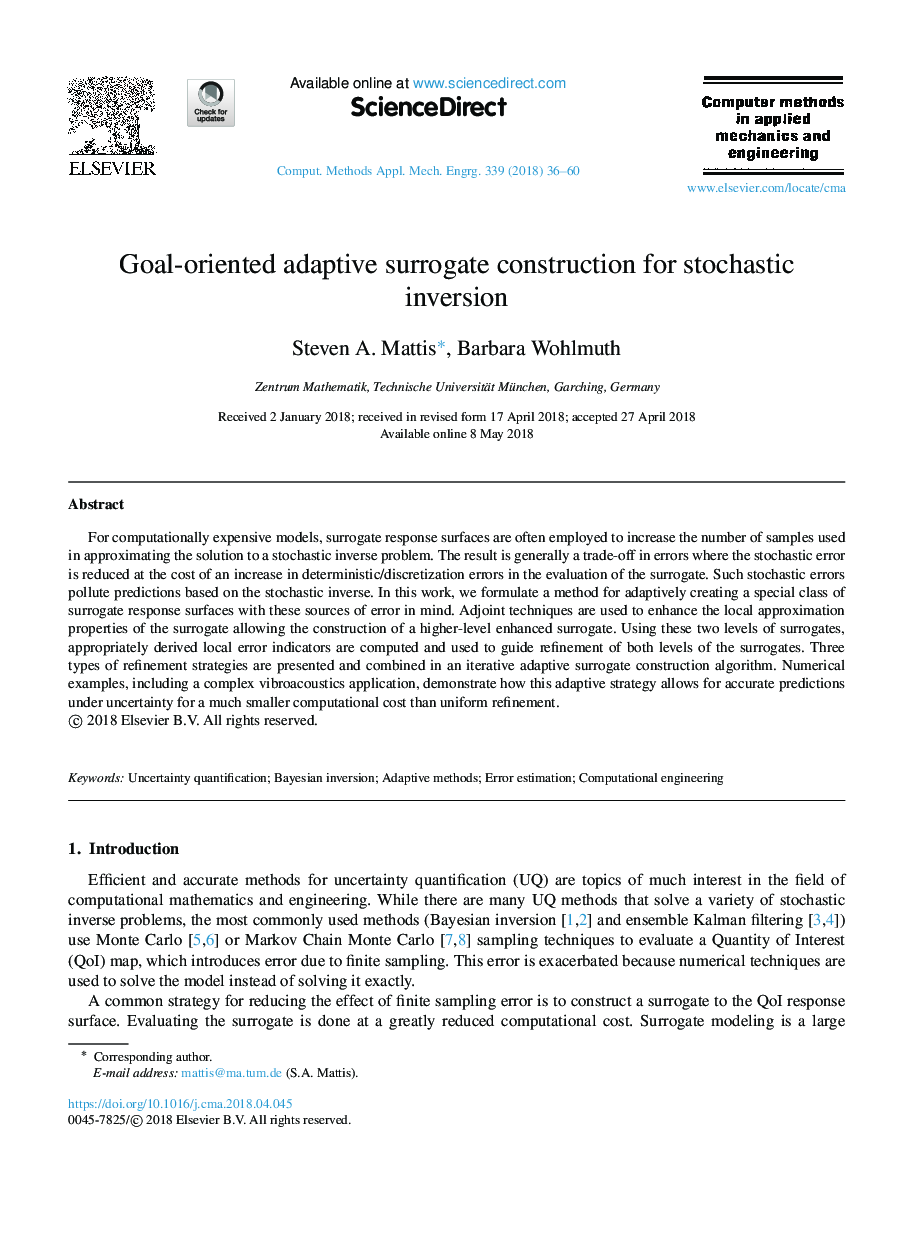| Article ID | Journal | Published Year | Pages | File Type |
|---|---|---|---|---|
| 6915345 | Computer Methods in Applied Mechanics and Engineering | 2018 | 25 Pages |
Abstract
For computationally expensive models, surrogate response surfaces are often employed to increase the number of samples used in approximating the solution to a stochastic inverse problem. The result is generally a trade-off in errors where the stochastic error is reduced at the cost of an increase in deterministic/discretization errors in the evaluation of the surrogate. Such stochastic errors pollute predictions based on the stochastic inverse. In this work, we formulate a method for adaptively creating a special class of surrogate response surfaces with these sources of error in mind. Adjoint techniques are used to enhance the local approximation properties of the surrogate allowing the construction of a higher-level enhanced surrogate. Using these two levels of surrogates, appropriately derived local error indicators are computed and used to guide refinement of both levels of the surrogates. Three types of refinement strategies are presented and combined in an iterative adaptive surrogate construction algorithm. Numerical examples, including a complex vibroacoustics application, demonstrate how this adaptive strategy allows for accurate predictions under uncertainty for a much smaller computational cost than uniform refinement.
Related Topics
Physical Sciences and Engineering
Computer Science
Computer Science Applications
Authors
Steven A. Mattis, Barbara Wohlmuth,
